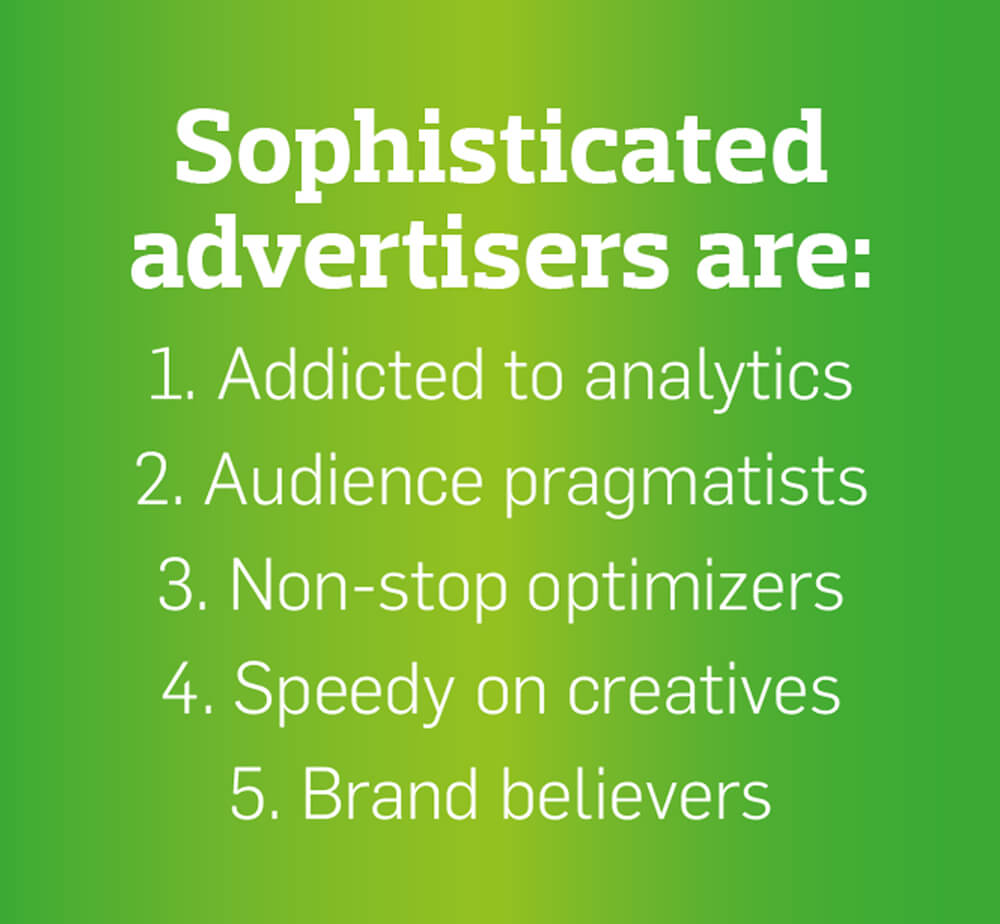
The art of digital marketing
Strong brands still have huge value, but today advertisers need to challenge established models and mindsets in marketing. Most importantly – you need to be addicted to analytics and optimization.
In an onstage interview at the Code/Media conference in February 2016 Gabe Leydon, CEO of Machine Zone, gave us a fascinating insight into how a sophisticated marketing organization thinks and behaves.
The gaming company is known for the mobile games Game of War and Mobile Strike, games marketed with jaw-dropping Super Bowl ads featuring Kate Upton and Arnold Schwarzenegger. It was not a pleasant experience if you were a publisher. Leydon provoked the mainly publisher crowd with statements such as “The media companies rely on someone with a real business to pay for their product (referring to advertisers)”.
This is not another text about the future of publishing – it is about the advertisers. I believe that more and more advertisers will follow Gabe Leydon´s line of thought. They will apply a more sophisticated thinking on all marketing. This thinking is rooted in performance marketing, but acknowledges and optimizes the use of strong brands and more traditional marketing.
Many advertisers are split between a traditional marketing analytical mindset and a rather unsophisticated last-click mindset (the last thing a user clicks on is credited 100 percent of the conversion). In the sophisticated advertiser, these two mindsets are merged and expanded upon, knowing that the last-click way of thinking about digital marketing is naturally flawed. Just because a user ends his path to purchase by doing a search and clicking on a search ad does not mean that the search ad is to be credited 100 percent for that conversion.
In most cases, performance marketing represents this last-click mindset and the sophisticated marketer needs to move further. He will have to know-by-data that the immaterial value of a strong brand will influence all elements in that user journey. It is not about performance marketing over branding; it’s about the ability to optimize all activities in light of a bigger goal.
True performance
I believe that strong brands are more important than ever and a good brand strategy and brand culture is the only efficient way of tactically executing non-stop, continuously optimized marketing in multiple channels. With this huge complexity, we need to reach true performance to being able to deliver value to our customers and revenue for our businesses.
True performance comes from a healthy addiction to analytics. You need to have numbers documenting everything, if you don’t have them and know how to use them, you have nothing more than belief. The algorithms optimizing your search campaigns do not rely on belief, they feed on what they regard as solid facts. How has this branding campaign affected the number of downloads of my app? How many app downloads do I need to win market shares? These are the type of questions a sophisticated marketer will answer with increasing depth and insights. The addiction to analytics is also stretching into the area of target groups and segmentation. Today we have more precise ways of knowing who to advertise to than ever before. Instead of just predefining target groups or audiences, the sophisticated advertiser will also reverse the process and regard audiences as something you pitch against each other, almost like you rotate ads on Google Adwords, to eventually use the audience that is performing better.
This optimization by audiences is at play every day on Facebook and the sophisticated advertiser has a dynamic and pragmatic approach to its audiences, matching audiences with products in a data-driven manner.
Ongoing optimization
Based on speedy analysis, sophisticated advertisers make big decisions on media bids, placements and creatives all the time. This ongoing optimization is backed up by clever marketing systems that automatically adjust and optimize enormous search and social campaigns minute-by-minute.
Earlier this type of non-stop optimization was a feature reserved for search, social and non-premium display advertising, but the programmatic evolution supports this type of behavior on even the most attractive inventory. This way of thinking will get another dimension when programmatic TV is rolled out or more users watch TV on the web. This increased potential for executing real-time leads to more tactical agility.
Money and creatives
Sophisticated advertisers solve the challenge of feeding multiple visual advertising channels with banners and videos. Money and creatives fuel the performance machine and the latter is preferred fresh. What you put in front of the user has lots of impact on the results. The sophisticated advertiser will streamline the production and get large amounts of creatives produced, implemented, tested and optimized fast.
This is a vital part of running large- scale social and programmatic display advertising. It will also be the way of doing even more engaging brand experiences such as TV ads.
In an advertising world of seemingly less and less magic, more and more is driven by cold numbers and even colder tech and robots, I take comfort in knowing that triggering a response or touching someone’s heart with a well-worked creative communications product does still have a value. After all, the deeper elements of a brand are more exposed now than ever before and are given more potential touch-points than ever before.
Strong brands have huge value.
I just prefer to know what that value is and how to build on it in a real-time marketing universe.
